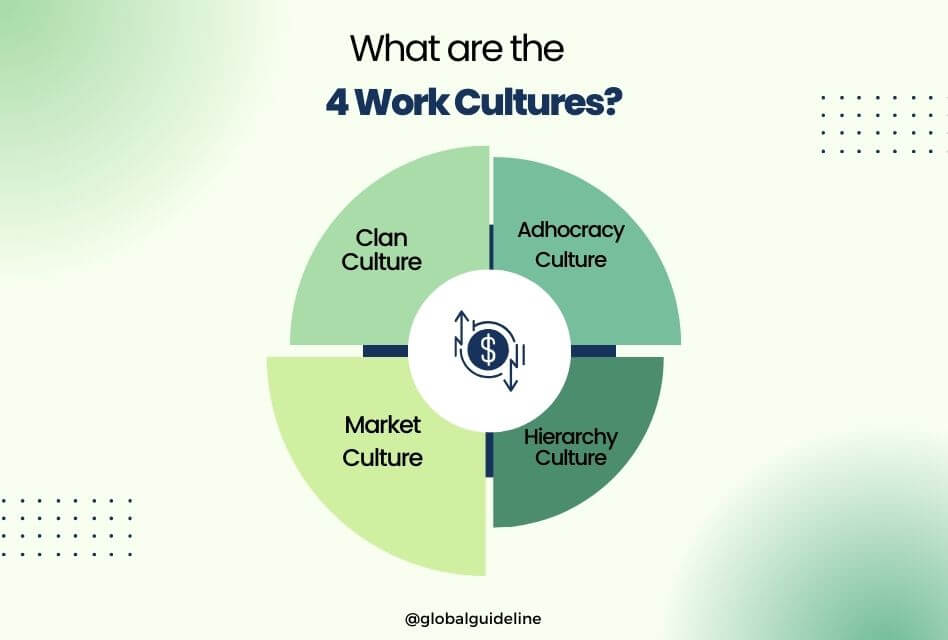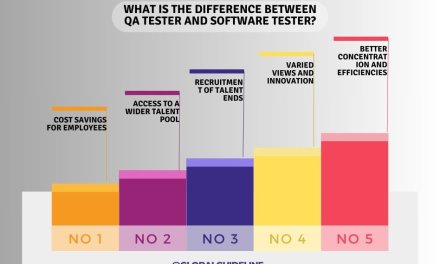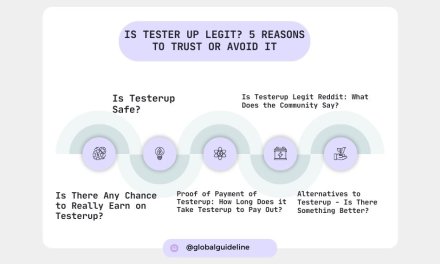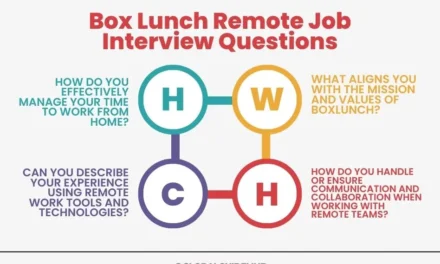It is more important than ever in today’s globalized economy to understand the subtleties of work culture across countries. Companies do operate cross-border; diverse teams make up 21st-century teams, and yet employees often find themselves working in an environment that is very much different from their own cultural backgrounds. A work culture test based on country can show variations in workplace practices, values, and expectations, and differences are especially helpful for organizations and employees to navigate these complexities more effectively. Why they are important, what insights the tests give, and how they can help in creating a more inclusive and productive work environment. Of course, to answer this, I must first define work culture.
Table of Contents

1. Understanding the Concept of Work Culture
It makes sense, then, to understand what is termed work culture before delving into the specifics of a work culture test based on country. Work culture refers to the joint values, beliefs, behaviors, and practices that typify an organization. This determines how employees behave with each other, decide, and can carry out their work effectively.
What Is the Culture Test for Work?
A work culture test is defined as a method of determining the appropriateness of an individual’s values and actions in an organization. Relating this to an international perspective, a country-based test of work culture considers how these cultural differences affect work-place dynamics and employee satisfaction in a workplace.
For instance, a culture test might inquire into communication style, styles of decision-making, and attitudes toward hierarchy, just to name a few. Of course, these vary wildly from country to country.
Why Understand Work Culture?
Working culture is what determines everything-involvement and productivity of employees, satisfaction and retention in their jobs. Moreover, having a globalized workforce, teams are usually composed of members from different countries. Knowing these cultural differences would avoid misunderstandings and conflicts that different teams could have in the workplace.
2. What Would be Uncovered in a Work Culture Test
A country-specific work culture test reveals a number of significant differences in how the work will be approached, organized, and valued across countries. It can be analyzed through various frameworks, such as Geert Hofstede’s cultural dimensions theory, widely used for the comparison of work cultures across countries.
Hofstede Country Comparison: A Framework to Understand Cultural Differences
Among those models was that of Geert Hofstede, who is one of the most used tools when understanding cultural difference at work. He identified six dimensions describing how cultures differ from each other:
- Power Distance: The degree to which less powerful members of a society accept and expect power to be distributed unequally.
- Individualism vs. Collectivism: The degree to which people within a culture prefer to act as individuals rather than as members of a group.
- Masculinity vs. Femininity: Emotional roles between the genders, where, for instance, competitiveness is preferred in masculine economies, whereas caring for people and the quality of life is more emphasized in feminine ones.
- Uncertainty Avoidance: Degree to which people feel uneasy with uncertainty and ambiguity.
- Long-Term vs. Short-Term Orientation: This refers to the time orientation toward future rewards vs. respect toward tradition and the traditional social order.
- Indulgence vs. Restraint: The amount of indulgence in a culture refers to the freedom or easiness with which basic human hedonic needs concerning fun and enjoyment can be gratified.
For example, a country comparison using Hofstede may reveal that the United States has high scores for individualism and low scores for power distance while Japan has high scores for uncertainty avoidance and long-term orientation.
How Do You Measure Work Culture?
Questionnaires, interviews, and culture fit test can be used to assess workplace cultures. Culture fit tests the feature of communication, decision-making, work-life balance, among other areas. These measures investigate how well an employee fits the culture of their employer.
For example, a free culture fit assessment test could ask: “What is the degree of autonomy employees expect regarding their work? What is the preferred mode of giving feedback? What are attitudes regarding work-life balance?”
What are the 4 Work Cultures?
There are four primary types of work cultures, and they include the following:
- Clan Culture: It is a work environment that inspires the sense of belonging and collaboration.
- Adhocracy Culture: This is an energetic, entrepreneurial form of work culture in which there is emphasis on innovation and risk-taking.
- Market Culture: A result-oriented culture that is competitive, achievement-oriented and focused on getting things done.
- Hierarchy Culture: a formalized and bureaucratic culture that focuses on procedures and stability
Example: an organizational culture review could label an organization as having a market culture in which the focus is results attainment and outperformance
3. How Work Culture Varies by Country
From one country to the next, each has its specific work culture. It presents history, values, and basics that society lives by. Therefore, understanding the differences would be beneficial for an employee working in a global or multicultural environment.
Best Country for Work Culture?
Which country boasts the best work culture? Indeed, a simple question, but one that again brings the response back to individual preferences and value systems. For instance, Scandinavian countries like Denmark and Sweden make everyone impressed by their emphasis on a balance between work and life, even flat organizational structures, and, of course, great collaborative work environments.
For example, the best 10 countries that have work-life balance still include the likes of Norway, Netherlands, and Germany that ensure that the people working under them enjoy more lavish times for holidays, flexible hours in work, and intense activities that give more importance to families.
What Country Has the Worst Work Culture?
On the other hand, which country has the worst work culture is debatable, but some countries are constantly faced with criticism for long working hours, high stress, and rigid hierarchies. Countries like Japan and South Korea, for instance, despite their economic successes, often let people cite the demanding work culture in them leading to burnout and work-related stress.
Long-term and short-term orientation in a work culture
Work culture reiterates that long-term orientation understands planning, perseverance, and thrift. On the contrary, short-term orientation is based on tradition, social obligations, and quick results. Long-term or short-term orientations can make a lot of differences in the way a business is handled as well as how employees are motivated.
For example, in countries like China and Japan, there is a long-term orientation where the key things are durable relationships and long-run success. In contrast, the United States is still more short-term-oriented – three months, a quarter of a year, and all the immediate results.
4. Applying Work Culture Tests to Organizational Success
A work culture test based on country, not only presents itself as a diagnostic tool, but can also supply strategy as a means of improving organizational success. This enables companies to understand and adapt to these differences in cultures with the likelihood of increasing employee satisfaction, enhancing productivity, and ultimately leading to much more inclusive working places.
How to Use a Work Culture Test
- Identify Areas for Improvement: Apply the assessment to your organization’s culture to see how it matches the cultural preferences of the employees from various countries.
- Identify Areas to Improve on: Identify gaps where your organization’s culture does not align with the cultural values of your employees. Work on filling in those gaps.
- Create Inclusivity: Use the lesson learned to make the work environment more inclusive, as it respects and values cultural diversity.
- Improve Communication: Understand the multicultural norms and expectations that govern communication in a given culture and how they behave so as to lead effective communication and collaboration across teams.

Free Work Culture Test Based on Country
There are many free work culture tests based on country that you can source online to give you an idea of the kind of approach other cultures might have towards work. They can be handy for both HR practitioners and managers as well as employees who work across international or cultural boundaries.
For example, the country comparison tool would enable an organization to understand cultural differences between Germany and the U.S. in terms of style, ways of making decisions and expectations that their employees portray.
Corporate Culture and International Business
Corporate culture also plays a big role in international business. Companies are aware of the norms prevalent in different cultures, which allows them to create better partnerships with their business partners internationally, avoid and evade cultural differences that will impact business transactions, and prevent misunderstandings that will deter business success.
Example: If a firm were to expand its business to Japan, it may have to change its corporate culture to fit the country’s business ways, such as seeking consensus before making decisions and showing respect for age and authority.
FAQ Section
Q: What country has the best work culture?
A: A few countries, including Denmark, Sweden and the Netherlands, are usually heard of as able to claim the best work culture. Elements of strong worklife balance, flat organisation structures and employee welfare often feature within this type of culture.
Q: What is a work culture test?
A: Work culture test is a culture analysis for work that helps evaluate the congruence of an individual with the organization’s values and behaviors. It is also used to compare work cultures in various countries to understand differences at work and on the job.
Q: How do you measure workplace culture?
A: The workplace culture can be measured by the means of surveys, interviews, culture fit assessment tests, and through statistical analysis of employee behavior and attitudes at work.
Q: What are the 4 work cultures?
A: There exist four primary work cultures, which are Clan Culture, Adhocracy Culture, Market Culture, and Hierarchy Culture. Each of the four cultures has its values, behaviors, and practices.
Q: Which country has the Worst country for work culture?
A: Countries, for instance, Japan and South Korea, are frequently criticized of a hard work culture with very long hours and a very high pressure level, which causes burnout and work-related illnesses.

Conclusion
A country-based work culture test provides a fruitful insight into the differences between various cultures in approaching work-from their values, behaviors, to practices. Such differences point to why companies across the globe need to be particular in the workplace culture. Tools such as Hofstede’s cultural dimensions and country comparison tools have aided the organization in understanding the complexities in conducting its international business by providing a roadmap for the cultivation of a culture at work that supports success across borders.
Today, whether you are an HR professional, a manager, or just an employee, being culturally aware and adjusting according to it is the need of the hour for success in such diverse work environments. It is with this understanding from such work culture tests that you would enhance communication, improve job satisfaction, and achieve organizational success.
Finding the right birthday wishes for a colleague is not a difficult task. You can use professional or sincere words, funny lines, or even a personalized message. What is essential here is that your birthday wishes be frank and represent your relationship with the person. Using examples and tips found in this blog post, you will certainly make your colleague’s birthday memorable and contribute to a positive workplace culture.
Remember, a thoughtful birthday wish can warm up the heart of anyone and strengthen professional relationships so take some time to come up with a best possible wish to make your colleague feel truly appreciated.
Related Posts:
10 Store Executive Job Responsibilities to Boost Sales










